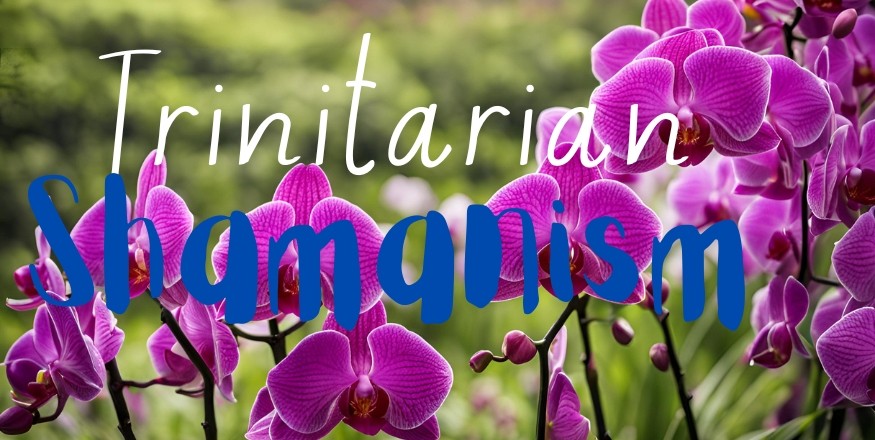 x
x
### Definition of a Shaman
A shaman is a spiritual practitioner who acts as an intermediary between the human world and the spiritual realm. Shamans are known for their abilities to enter altered states of consciousness, often through trance, in order to communicate with spirits, heal the sick, and guide souls. The role of the shaman varies widely among different cultures, but there are common elements that define their practice.
#### Key Characteristics of a Shaman:
1. **Intermediary Role**: Shamans mediate between the physical and spiritual worlds, often communicating with spirits, ancestors, and deities. This communication is typically for purposes such as healing, divination, and guidance.331Please respect copyright.PENANA2BaefpvMAd
- **Source:** Eliade, M. (1964). *Shamanism: Archaic Techniques of Ecstasy*. Princeton University Press.
2. **Altered States of Consciousness**: Shamans enter altered states of consciousness through various techniques, including drumming, dancing, fasting, and the use of entheogenic substances. These states allow them to travel to the spiritual realm.331Please respect copyright.PENANAoMSywPsRIR
- **Source:** Harner, M. (1980). *The Way of the Shaman*. Harper & Row.
3. **Healing Practices**: One of the primary roles of a shaman is healing. This can involve physical, emotional, and spiritual healing. Shamans use a variety of methods, such as herbal medicine, energy work, and soul retrieval, to restore balance and health.331Please respect copyright.PENANAQIm1KRVEN2
- **Source:** Vitebsky, P. (1995). *The Shaman: Voyages of the Soul, Trance, Ecstasy and Healing from Siberia to the Amazon*. Duncan Baird Publishers.
4. **Rituals and Ceremonies**: Shamans perform rituals and ceremonies that are often integral to their communities' spiritual lives. These rituals can include initiations, seasonal celebrations, and rites of passage.331Please respect copyright.PENANAan6DYxedHZ
- **Source:** Halifax, J. (1982). *Shamanic Voices: A Survey of Visionary Narratives*. E.P. Dutton.
5. **Soul Retrieval**: In many traditions, shamans are believed to retrieve lost parts of a person's soul that may have departed due to trauma or illness. This process is essential for restoring an individual's wholeness and well-being.331Please respect copyright.PENANAsrlV9wIXJO
- **Source:** Ingerman, S. (1991). *Soul Retrieval: Mending the Fragmented Self*. HarperCollins.
6. **Spirit Animals and Guides**: Shamans often work with spirit animals or guides, which provide them with wisdom, protection, and assistance in their spiritual work.331Please respect copyright.PENANA5XSAql3M8f
- **Source:** Tedlock, B. (2005). *The Woman in the Shaman's Body: Reclaiming the Feminine in Religion and Medicine*. Bantam Books.
7. **Community Role**: Shamans often hold an important place within their communities, acting as spiritual leaders, advisors, and healers. Their knowledge and abilities are typically passed down through generations or received through a spiritual calling.331Please respect copyright.PENANAbbaRDte4Tu
- **Source:** Winkelman, M. (1992). *Shamanism: The Neural Ecology of Consciousness and Healing*. Greenwood Publishing Group.
### Origins and Cultural Variations
The concept of the shaman is found in many indigenous cultures around the world, from the Siberian steppes to the Amazon rainforest. While the specific practices and beliefs may vary, the essential role of the shaman as a mediator and healer remains consistent.
- **Siberian Shamanism**: Often considered the archetype of shamanism, with practices involving drumming, chanting, and the use of animal symbolism.331Please respect copyright.PENANAODGE8MZOvb
- **Source:** Eliade, M. (1964). *Shamanism: Archaic Techniques of Ecstasy*. Princeton University Press.
- **Native American Shamanism**: Practices vary widely among tribes but often include the use of sweat lodges, vision quests, and herbal medicine.331Please respect copyright.PENANAnWXP15zCty
- **Source:** Grim, J. A. (1983). *The Shaman: Patterns of Siberian and Ojibway Healing*. University of Oklahoma Press.
- **Amazonian Shamanism**: Often involves the use of ayahuasca and other plant medicines to induce visions and connect with the spirit world.331Please respect copyright.PENANAvLHvBalg0P
- **Source:** Luna, L. E., & White, S. F. (2000). *Ayahuasca Reader: Encounters with the Amazon's Sacred Vine*. Synergetic Press.
### Modern Shamanism
In contemporary times, shamanic practices have been adapted and integrated into various spiritual and therapeutic contexts. Modern shamans may not necessarily belong to an indigenous culture but still practice the core techniques and principles of shamanism.
- **Neo-Shamanism**: A modern adaptation that often incorporates elements from various shamanic traditions, focusing on personal growth, healing, and spiritual exploration.331Please respect copyright.PENANAFd8rvEdiSe
- **Source:** Harner, M. (1990). *The Way of the Shaman: A Guide to Power and Healing*. Harper & Row.
In summary, a shaman is a multifaceted spiritual practitioner who bridges the physical and spiritual worlds to heal, guide, and support their community. Their practices, while diverse, share core elements that define their essential role and functions within various cultural contexts.
ns216.73.216.94da2

































